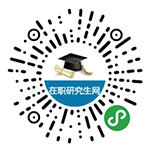- 微信公眾號(hào)

政策解讀
- 微信小程序

快速擇校

政策解讀

快速擇校
The average number of authors on scientific papers is sky-rocketing. That’s partly because labs are bigger, problems are more complicated, and more different subspecialties are needed. But it’s also because U.S. government agencies have started to promote “team science”. As physics developed in the post-World War Ⅱ era, federal funds built expensive national facilities, and these served as surfaces on which collaborations could crystallize naturally.
Yet multiple authorship — however good it may be in other ways — presents problems for journals and for the institutions in which these authors work. For the journals, long lists of authors are hard to deal with in themselves. But those long lists give rise to more serious questions when something goes wrong with the paper. If there is research misconduct, how should the liability be allocated among the authors? If there is an honest mistake in one part of the work but not in others, how should an evaluator aim his or her review?
Various practical or impractical suggestions have emerged during the long-standing debate on this issue. One is that each author should provide, and the journal should then publish, an account of that author’s particular contribution to the work. But a different view of the problem, and perhaps of the solution, comes as we get to university committee on appointments and promotions, which is where the authorship rubber really meets the road. Half a lifetime of involvement with this process has taught me how much authorship matters. I have watched committees attempting to decode sequences of names, agonize over whether a much-cited paper was really the candidate’s work or a coauthor’s, and send back recommendations asking for more specificity about the division of responsibility.
Problems of this kind change the argument, supporting the case for asking authors to define their own roles. After all,if quality judgments about individuals are to be made on the basis of their personal contributions, then the judges better know what they did. But if questions arise about the validity of the work as a whole, whether as challenges to its conduct or as evaluations of its influence in the field, a team is a team, and the members should share the credit or the blame.
1. According to the passage, there is a tendency that scientific papers ___________ .
A.are getting more complicated
B.are dealing with bigger problems
C.are more of a product of team work
D.are focusing more on natural than on social sciences
2. One of the problems with multiple authorship is that it is hard ___________ .
A.to allocate the responsibility if the paper goes wrong
B.to decide on how much contribution each reviewer has made
C.to assign the roles that the different authors are to play
D.to correspond with the authors when the readers feel the need to
3. According to the passage, authorship is important when ___________ .
A.practical or impractical suggestions of the authors are considered
B.appointments and promotions of the authors are involved
C.evaluators need to review the publication of the authors
D.the publication of the authors has become much-cited
4. According to the passage, whether multiple authors of a paper should be taken collectively or individually depends on ___________ .
A.whether judgments are made about the paper or its authors
B.whether it is the credit or the blame that the authors need to share
C.how many authors are involved in the paper
D.where the paper has been published
5. The best title for the passage can be ___________ .
A.Writing Scientific Papers: Publish or Perish
B.Collaboration and Responsibility in Writing Scientific Papers
C.Advantages and Disadvantages of Team Science
D.Multiple Authors, Multiple Problems
報(bào)考:♦2012在職聯(lián)考科目及時(shí)間安排 ♦準(zhǔn)考證17日開始下載 下載入口
備考:♦在職聯(lián)考?xì)v年真題 ♦GCT復(fù)習(xí)規(guī)劃 ♦英語(yǔ)大綱及試題結(jié)構(gòu)♦備考技巧
輔導(dǎo):♦環(huán)球卓越10月聯(lián)考輔導(dǎo) ♦學(xué)苑教育10月聯(lián)考輔導(dǎo)班 ♦北大MPA培訓(xùn)
特別聲明:①凡本網(wǎng)注明稿件來(lái)源為"原創(chuàng)"的,轉(zhuǎn)載必須注明"稿件來(lái)源:育路網(wǎng)",違者將依法追究責(zé)任;
②部分稿件來(lái)源于網(wǎng)絡(luò),如有侵權(quán),請(qǐng)聯(lián)系我們溝通解決。

本科畢業(yè)后可以報(bào)考在職研究生。若報(bào)考同等學(xué)力申碩,本科可以直接進(jìn)校學(xué)習(xí),有學(xué)士學(xué)位滿3年條件,可以申碩;若報(bào)考非全日制研究生,本科學(xué)歷滿3年可報(bào)考管理類專業(yè),本...

在職研究生英語(yǔ)考試難度都不是很大,其中同等學(xué)力申碩因其先學(xué)習(xí)后考試的形式,深得報(bào)考者的人心。有意向的人員,可以趁早與在線老師聯(lián)系報(bào)名。

中國(guó)古代史在職研究生介紹中國(guó)古代史在職研究生是面向在職人員開設(shè)的人文社科類學(xué)歷提升項(xiàng)目,聚焦先秦至明清的歷史脈絡(luò)、制度演

福建在職研究生熱門院校排行榜涵蓋廈門大學(xué)、福建師范大學(xué)、福州大學(xué)、福建醫(yī)科大學(xué)等,其中廈門大學(xué)金融學(xué)實(shí)力突出,學(xué)費(fèi)2.5萬(wàn)-4.28萬(wàn);福建師范大學(xué)主打體育學(xué)、...

電氣工程在職研究生學(xué)費(fèi)3萬(wàn)左右院校有華北電力大學(xué)(3萬(wàn))、河北工業(yè)大學(xué)(2.8萬(wàn))、安徽工業(yè)大學(xué)(3.38萬(wàn))等,這些院校專業(yè)實(shí)力強(qiáng)勁,授課方式靈活(多為網(wǎng)絡(luò)班...

專科能報(bào)在職研究生嗎?專科生可報(bào)在職研究生,有同等學(xué)力申碩、非全日制研究生、中外合作辦學(xué)/國(guó)際碩士三種途徑。同等學(xué)力申碩專科可入課程班,但申碩需本科有學(xué)位滿3年...
在職研究生
入學(xué)考試
在職研究生
有用嗎
在職研究生
如何報(bào)考
在職研究生
報(bào)考流程
在職研究生
報(bào)名條件
在職研究生
學(xué)費(fèi)一覽表
在職研究生
考哪些科目
在職研究生
怎么報(bào)名
在職研究生
一年考幾次
評(píng)論0
“無(wú)需登錄,可直接評(píng)論...”